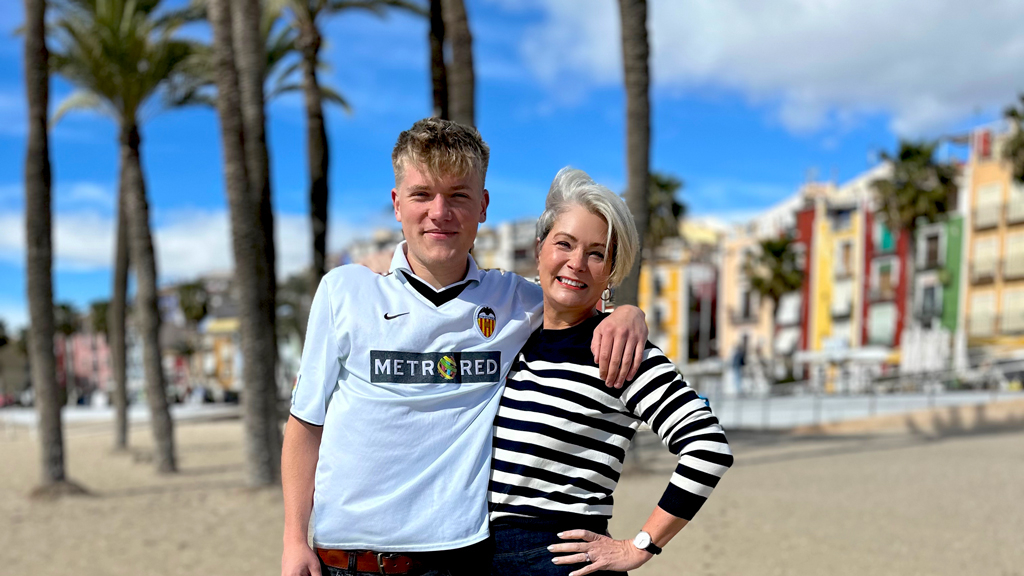I’ve been meaning to write a post about cashmere for ages and with Christmas approaching, it seems like a good time. In the comments you often mention that you feel quality has declined over the last few years and wonder why. So today I’m focusing on a small family run business The Cashmere Specialist to bring you a cashmere 101 and looking at why high street cashmere isn’t what it was. (In the interests of transparency, this has been commissioned by them but they were happy for me to write about whatever I thought would interest you).
Peter, the owner of The Cashmere Specialist first got in touch with me over a year ago to introduce me to his collection. At the time his website needed some work because it was difficult to navigate the huge selection that they have – there are over 200 variations of jumpers and cardigans, all in different weights, colours and styles. It’s now been relaunched and so I’m happy to tell you more about it but while I had a team of cashmere obsessives to hand, I thought I’d first take the opportunity to look at cashmere in a bit more depth.
The explosion of cashmere in the UK
Cashmere didn’t appear on my radar until I was 20 and living in Paris. A very chic friend took me to meet her maman who looked very Parisian in her jeans, loafers, blazer and a charcoal grey crew neck jumper that was utterly simple but with a richness of texture that I hadn’t come across before. I encountered it again during my years at Selfridges but even then it was a still pretty rarified product, kept in a small department on the 3rd Floor which catered to older customers.
However in the pre-recession years of the early noughties, cashmere exploded onto the high street and at that point it really did feel special. It had a softness and depth of pile that didn’t compare with any other kind of knitwear. People in the UK soon became willing to stretch to £99 for a jumper and demand built up rapidly. The result of course was that in the rush to supply it (whilst still keeping the price per piece below £100) quality was compromised and now a lot of high street cashmere feels more like lambswool. Over the last few months Peter has helped me to understand why so I’m going to share what I’ve learned with you.
Where does cashmere come from?
The best cashmere is sourced from the Himalayas where goats live high in the mountains in China or Mongolia with the coldest parts of Inner Mongolia growing the very best fleece. However to meet demand, cashmere farms are increasingly being opened in Iran and Afghanistan. The problem is that it doesn’t get cold enough there for the goats to grow the softest wool, instead they grow shorter rougher hair and the end result is cheaper cashmere that feels stiff and pills easily.
You see when goats graze at the high altitudes of the Himalayas where the winter temperatures often dip to below -40 degrees centigrade, their fur thickens as a form of insulation. They have a double fleece; the outer layer is rough to protect them from water and the undercoat is fine and soft to keep them warm. The colder it gets, the longer and softer the undercoat grows. When spring comes around the goats start to moult and it must feel itchy because they rub up against rocks and bushes to speed the process up. Historically it was these cast-offs that were gathered for wool but now farmers tend to comb the goats manually as the season turns.
Once the wool has been collected, it is then traded. The world’s best cashmere producers are based in the foothills of the Himalayas in Nepal and they buy the highest quality. The small family businesses there have been creating cashmere garments for hundreds of years, passing their skills down through the generations. They start with a manual process of sorting the fibres, scrapping anything that isn’t sufficiently long and fine (the rejected fibres go on to factories in China). True cashmere fibres have a diameter of up to only 0.0155mm and to put that into perspective, a human hair is 0.075. The wool is washed, dyed and turned into yarn which is either woven or knitted – shawls and pashminas are created on a loom and jumpers are knitted by hand. It takes between three and five goats to provide enough wool for one high quality cashmere sweater – so all of this helps to build a picture of why good cashmere is expensive.
However, the manufacturers that supply a lot of high street retailers keep costs down by sourcing from factories in China where the whole process is automated. There, machines handle the process of sorting, weaving and knitting with thicker fibres being included in the mix, often blended with sheep’s wool too.
Cashmere 101 – how to buy the best quality
Cashmere specialists sell garments in different weights and weaves so you need to know what you’re looking for. Cashmere is measured in ply which tells you how many threads have been twisted together. The thicker the ply, the warmer and stronger the garment. All cashmere specialists will tell you to avoid anything made from single ply because it won’t last, it will lose its shape quickly and develop holes. Two-ply cashmere is used for light, all year round garments; four-ply is warmer and Peter suggests that six-ply is good for a cold British winter.
The next thing that impacts the jumper is the gauge or how many stitches there are per inch. The lightest cashmere is knitted in a looser lofty knit with perhaps seven stitches per inch. A tighter gauge can mean that the jumper looses some of the soft cashmere feel but it will have incredible insulating properties, keeping you very warm – cashmere is eight times more insulating than ordinary sheep’s wool.
Why high street cashmere isn’t as good as it was
Good quality cashmere should last for years and if the quality is right in the first place, it isn’t as hard to look after as you think. Interestingly I’ve learned that mainstream retailers have found that people buy by the initial ‘hand-feel’ of an item and so manufacturers often improve this by spraying standard garments with a slightly waxy finish. This helps the cheaper short fibres to feel as smooth and slippery as an expensive long fibre jumper when you’re buying it but as soon as you wash it, this finish disappears. Of course people assume that their washing technique is to blame.
How to look after quality cashmere
- If you have a good cashmere jumper, wash it at 20℃ or below, preferably by hand but if you use a machine, opt for the delicate cycle so that the jumper isn’t thrashed around too much which damages the delicate fibres.
- If washing by hand use the spin cycle on your machine when you’ve rinsed it rather than wringing it out manually (max 1000 RPM).
- Don’t dry cashmere in direct sunlight, it will damage the fibres and it will lose its softness.
- Good quality cashmere should never need to be ironed.
- There is always a chance that a new jumper might pill but this should stop after two or three washes. In the meantime use a cashmere comb or a debobbling machine.
- Cashmere is great for travelling because it doesn’t crease and it packs down easily – this is because it is high loft (the amount of air in the fibre). It is also wicking so it pulls moisture away from the body – for this reason you should never wear a cashmere jumper two days in a row, it needs time to air.
What you’ll find at The Cashmere Specialist
Well everything cashmere obviously but there’s also some Yak and Alpaca. Why yak? Because yaks live at similarly high altitudes to cashmere goats and produce wool that some say is even softer than cashmere (it’s also not as well known and so it’s cheaper). Alpaca is found more often in the UK; one animal can produce enough wool to make several sweaters so it’s more affordable. It’s worth knowing that alpaca jumpers aren’t quite as soft as cashmere or yak and they do tend to pill although The Cashmere Specialist tell me they’ve developed a method to overcome this with the jumpers that they produce.
You can find the yak collection here and the the alpaca selection here.
There’s a lot of cashmere on the site and so my advice is to browse by style, weight, colour or collection. Peter has asked me to point out that unlike the rest of the range, the low cost of the basic collection is achieved by producing the items in China but he assures me that they are still high quality, they just don’t have the hand finished element of the Nepalese pieces. As The Cashmere Specialist is a Slovakian brand you’ll notice that the styling on the website is quite European. I’ve found it can help to look at the items shot on their own as well as on the model – it just makes it easier to imagine them styled as we’d wear them over here. I’ve picked out some of my favourites – simple, classic pieces that would last forever:
Cardigans that hit the top of your thigh rather than the unflattering, wide, mid-hip section are hard to find. This one is just the right length and it’s available in fourteen colours. It’s made from two ply cashmere so you’ll be able to thrown it on at any time of year.
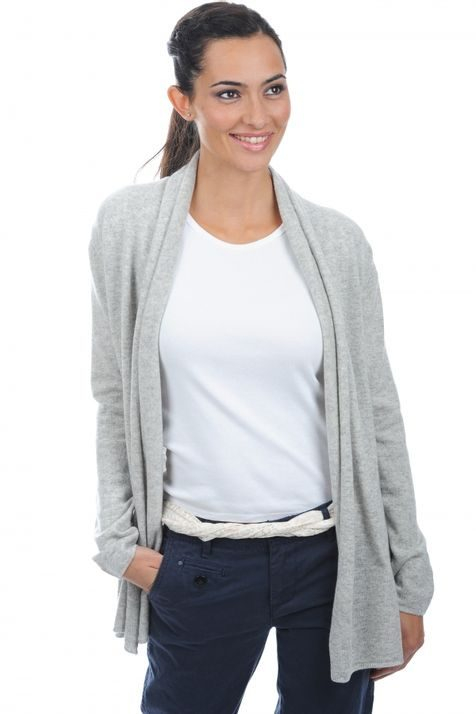
If you prefer something that fastens, this athleisure style hoodie is also two ply and available in a choice of eight colours, ranging from size XS to 4XL.
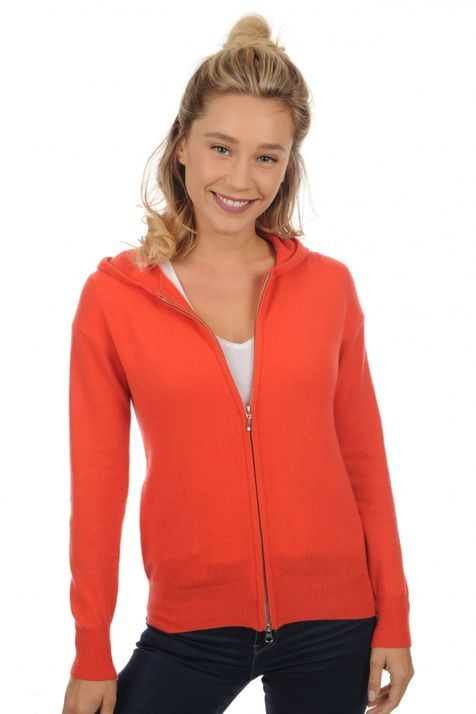
Another thing that is hard to find in a woman’s cut is a long V-neck – you often end up having to buy a man’s jumper to get one like this and then it has a boxy fit. I particularly like the deep V which elongates your frame, making you look slimmer. This style comes in four colours from XS to 2XL and it’s a two ply weight.

If you’re looking for something in a warmer weight for winter, this one is six ply and it’s obviously a best seller because it comes in thirteen colours and sizes from XS to 4 XL.

I avoid cashmere polo necks because I find them too warm but this one stands away from the neck so it gives you the effect without the heat. It’s one of the styles made in soft yak wool and I particularly like the loose, ungauged knit and the tubular hems which give it a relaxed feel. The body is a two ply knit and the neck is made from six ply to give it structure. It comes in three colours and sizes from XS to 4XL.
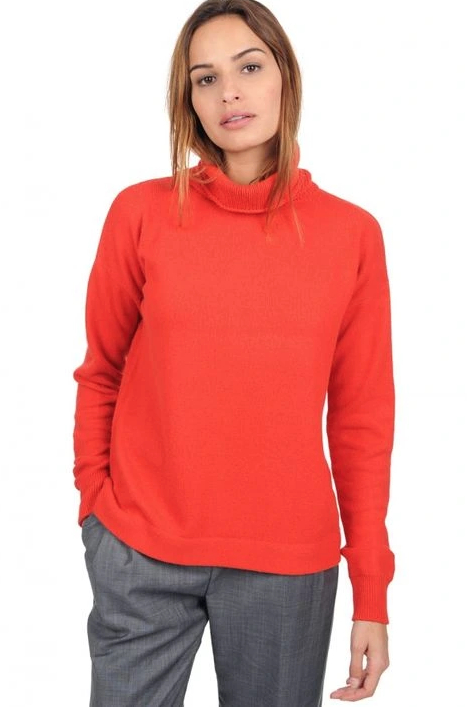
Yak wool relaxed polo neck jumper
And here’s an example of one of the lower priced alpaca knits with a flattering dipped neckline that shows the clavicles. Two ply, it’s made from baby alpaca wool and it’s available in six colours from size XS to 3XL.

There are accessories too, scarves, gloves and pashminas, ranging from opulent wraps like this one which is a two ply cashmere and silk blend, available in five colours.
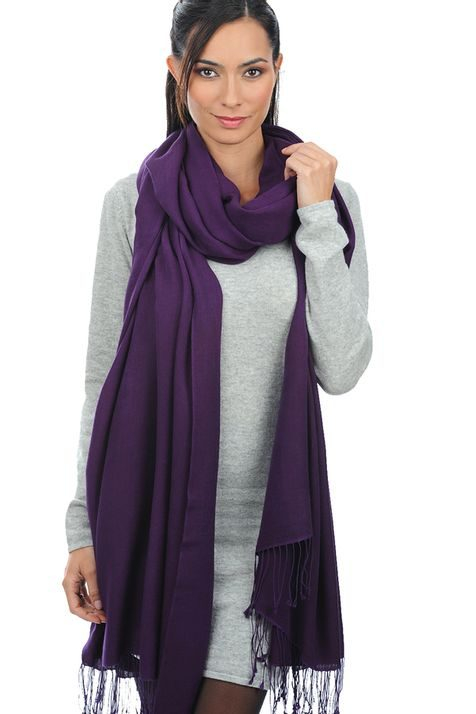
To this lovely herringbone weave which would really lift a navy coat, available in six colours, cosy four ply cashmere.
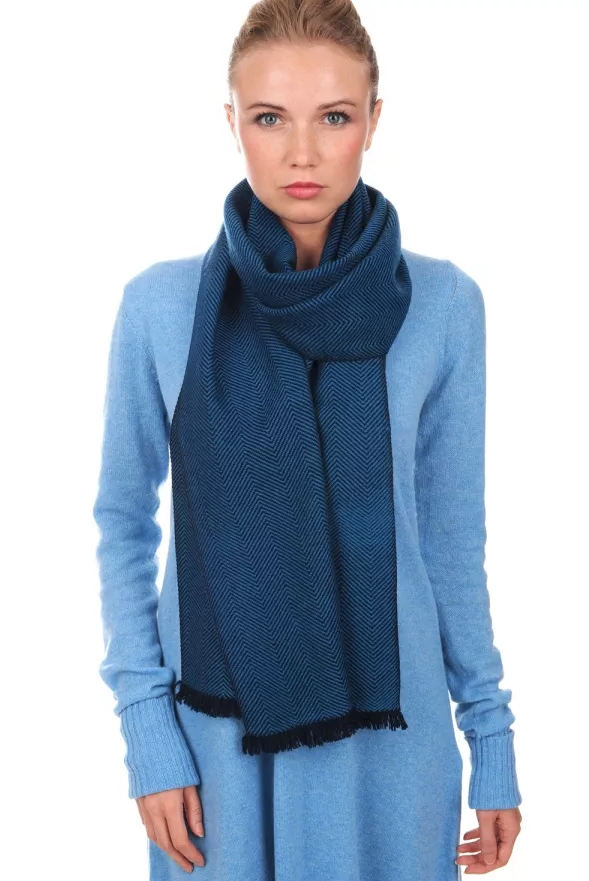
As part of this post I was invited to choose one piece and it wasn’t easy. I found myself going round and round the site but at this level of quality I knew that I should go for something that I would wear for years to come. I’m layering a lot at the moment because our garden office is toasty but the house is cold during the day. With it being so old it costs a fortune to heat so I shiver when I go up to make lunch. I’ve been swaddling myself in long cardigans but I’ve never been able to find a navy one that I like and here it is.
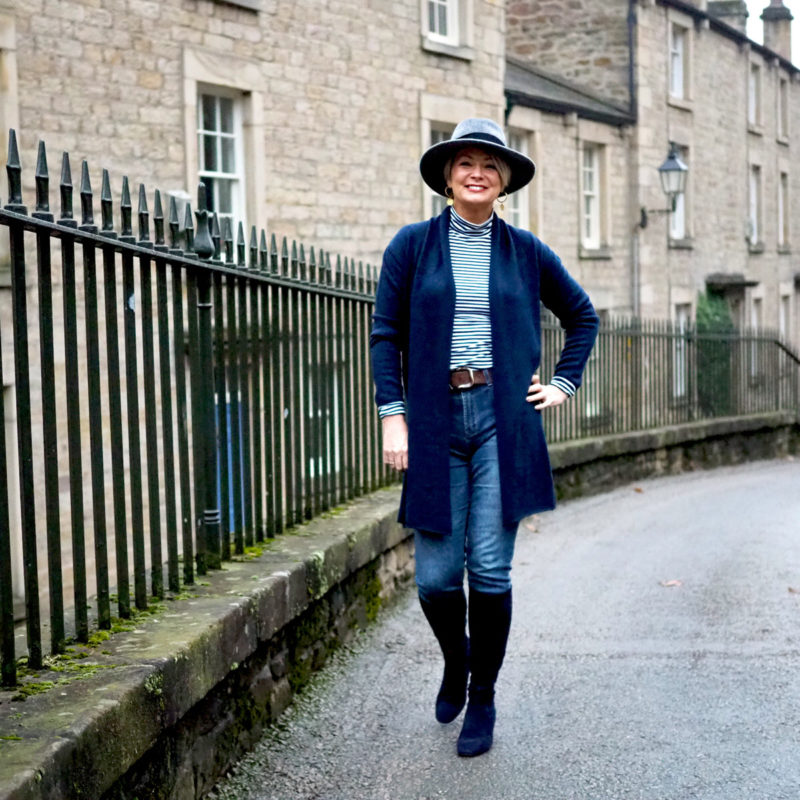
It’s four-ply which I find just right for wearing over something like a breton and I like the simple knit that has no ribbing or detail. It’s available in ten colours, from size XS to 4XL and I’m wearing a medium.

So, “Cashmere 101 & why high street cashmere isn’t what it was” – I hope it’s answered a few questions. If you have a look around their site you’ll see that the choice is endless and there’s also an option to have pieces made to order. They have a no quibble returns policy, shipping is fast via DHL and there’s an introductory offer of 10% off for Midlifechic readers until 11th December with code NIKKI. You’ll learn much more about cashmere as you wander through the site – I know I won’t look at a standard rail of cashmere in a shop in the same way ever again.
I’ll be back on Friday with a Midlife Lately catch-up and a round-up of what I’ve been wearing for working from home during lockdown – not that very much is changing for those of us who straddle the crevasse between Tier 2 and Tier 3. Half of our friends and clients are looking forward to a little liberation while the others are gritting their teeth for more of the same locked down life that they’ve been living since October.
One last thing – a few of you sent in suggestions of small independent retailers that you love after my request in last Friday’s post but by the time I opened them yesterday it felt as though the moment had passed. So instead I’m going to include a ‘reader recommended’ section at the end of this Friday’s post. If you’d like to add a brand that you love, please can you send it to me – nikki[at]midlifechic.co.uk (replacing the [at] with @). Please bear in mind that they need to be able to deliver nationally and I’m only including small independents rather than national brands. Let’s see if we can support some of the tiny businesses that are having such a difficult time this Christmas. Thank you, as always, for reading and see you on Friday.
Disclosure: ‘Cashmere 101 & why high street cashmere isn’t what it was’ was commissioned by The Cashmere Specialist but as always, I had full control over everything I wrote.
Recent posts you may have missed
A guide to the Black Friday offers
Thoughtful Christmas Gifts For Men 2020
Christmas gifts for teens and young adults 2020
Christmas 2020 Boden edit – outfit ideas
Christmas 2020 – how to make it feel special at home
Midlife lately – catching up after half term
The 4 coats you need for a lockdown winter
Celebrating a 50th birthday in Edinburgh between lockdowns
New autumn outfit updates – and midlife thoughts
AW20 Boden edit and midlife lately here
Easy ways to make your home cosy for Winter
Uniqlo denim – jeans review and try-on
Working from home – elevating the basics
How it feels when your child leaves for university – and new outfits
Capsule wardrobe refresher – preparing for AW2020
Disclosure: as with the majority of blogs, products featured on Midlifechic sometimes (but not always) include affiliate links. This means that if you choose to make a purchase, you are helping to support the site because a small referral commission may be paid. This contributes towards hosting fees, software costs, site maintenance and other plug-ins. Midlifechic could not exist without these small payments, so every contribution makes a big difference.




